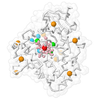Entry Database : PDB / ID : 3b3pTitle Structure of neuronal nos heme domain in complex with a inhibitor (+-)-n1-{cis-4'-[(6"-amino-4"-methylpyridin-2"-yl)methyl]pyrrolidin-3'-yl}-n2-(4'-chlorobenzyl)ethane-1,2-diamine Nitric-oxide synthase Keywords / / / / / / / / / / / / Function / homology Function Domain/homology Component
/ / / / / / / / / / / / / / / / / / / / / / / / / / / / / / / / / / / / / / / / / / / / / / / / / / / / / / / / / / / / / / / / / / / / / / / / / / / / / / / / / / / / / / / / / / / / / / / / / / / / / / / / / / / / / / / / / / / / / / / / / / / / / / / / / / / / / / / / / / / / / / / / / / / / / / / / / Biological species Rattus norvegicus (Norway rat)Method / / / Resolution : 2.45 Å Authors Igarashi, J. / Li, H. / Poulos, T.L. Journal : J.Med.Chem. / Year : 2009Title : Crystal structures of constitutive nitric oxide synthases in complex with de novo designed inhibitors.Authors : Igarashi, J. / Li, H. / Jamal, J. / Ji, H. / Fang, J. / Lawton, G.R. / Silverman, R.B. / Poulos, T.L. History Deposition Oct 22, 2007 Deposition site / Processing site Revision 1.0 Nov 4, 2008 Provider / Type Revision 1.1 Jul 13, 2011 Group Revision 1.2 Feb 21, 2024 Group / Database references / Derived calculationsCategory chem_comp_atom / chem_comp_bond ... chem_comp_atom / chem_comp_bond / database_2 / struct_conn / struct_site Item _database_2.pdbx_DOI / _database_2.pdbx_database_accession ... _database_2.pdbx_DOI / _database_2.pdbx_database_accession / _struct_conn.ptnr1_auth_asym_id / _struct_conn.ptnr1_auth_comp_id / _struct_conn.ptnr1_auth_seq_id / _struct_conn.ptnr1_label_asym_id / _struct_conn.ptnr1_label_atom_id / _struct_conn.ptnr1_label_comp_id / _struct_conn.ptnr1_label_seq_id / _struct_conn.ptnr2_auth_asym_id / _struct_conn.ptnr2_auth_comp_id / _struct_conn.ptnr2_auth_seq_id / _struct_conn.ptnr2_label_asym_id / _struct_conn.ptnr2_label_atom_id / _struct_conn.ptnr2_label_comp_id / _struct_conn.ptnr2_label_seq_id / _struct_site.pdbx_auth_asym_id / _struct_site.pdbx_auth_comp_id / _struct_site.pdbx_auth_seq_id
Show all Show less
 Yorodumi
Yorodumi Open data
Open data Basic information
Basic information Components
Components Keywords
Keywords Function and homology information
Function and homology information
 X-RAY DIFFRACTION /
X-RAY DIFFRACTION /  SYNCHROTRON /
SYNCHROTRON /  FOURIER SYNTHESIS / Resolution: 2.45 Å
FOURIER SYNTHESIS / Resolution: 2.45 Å  Authors
Authors Citation
Citation Journal: J.Med.Chem. / Year: 2009
Journal: J.Med.Chem. / Year: 2009 Structure visualization
Structure visualization Molmil
Molmil Jmol/JSmol
Jmol/JSmol Downloads & links
Downloads & links Download
Download 3b3p.cif.gz
3b3p.cif.gz PDBx/mmCIF format
PDBx/mmCIF format pdb3b3p.ent.gz
pdb3b3p.ent.gz PDB format
PDB format 3b3p.json.gz
3b3p.json.gz PDBx/mmJSON format
PDBx/mmJSON format Other downloads
Other downloads 3b3p_validation.pdf.gz
3b3p_validation.pdf.gz wwPDB validaton report
wwPDB validaton report 3b3p_full_validation.pdf.gz
3b3p_full_validation.pdf.gz 3b3p_validation.xml.gz
3b3p_validation.xml.gz 3b3p_validation.cif.gz
3b3p_validation.cif.gz https://data.pdbj.org/pub/pdb/validation_reports/b3/3b3p
https://data.pdbj.org/pub/pdb/validation_reports/b3/3b3p ftp://data.pdbj.org/pub/pdb/validation_reports/b3/3b3p
ftp://data.pdbj.org/pub/pdb/validation_reports/b3/3b3p Links
Links Assembly
Assembly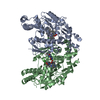
 Components
Components

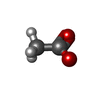

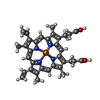
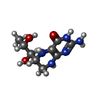
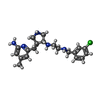
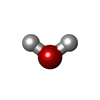





 X-RAY DIFFRACTION / Number of used crystals: 1
X-RAY DIFFRACTION / Number of used crystals: 1  Sample preparation
Sample preparation SYNCHROTRON / Site:
SYNCHROTRON / Site:  SSRL
SSRL  / Beamline: BL9-1 / Wavelength: 0.979 Å
/ Beamline: BL9-1 / Wavelength: 0.979 Å Processing
Processing FOURIER SYNTHESIS / Resolution: 2.45→38.86 Å / Rfactor Rfree error: 0.006 / Data cutoff high absF: 2201651.96 / Data cutoff low absF: 0 / Isotropic thermal model: RESTRAINED / Cross valid method: THROUGHOUT / σ(F): 0 / Stereochemistry target values: Engh & Huber
FOURIER SYNTHESIS / Resolution: 2.45→38.86 Å / Rfactor Rfree error: 0.006 / Data cutoff high absF: 2201651.96 / Data cutoff low absF: 0 / Isotropic thermal model: RESTRAINED / Cross valid method: THROUGHOUT / σ(F): 0 / Stereochemistry target values: Engh & Huber Movie
Movie Controller
Controller


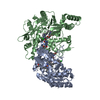
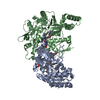
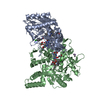

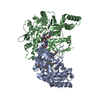
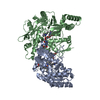
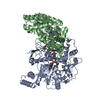

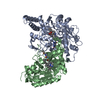

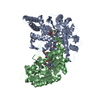
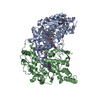

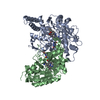
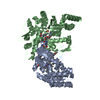
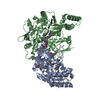
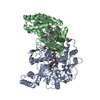

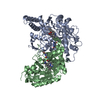

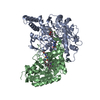
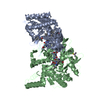
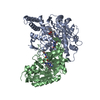
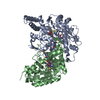
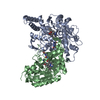
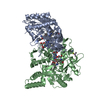
 PDBj
PDBj
